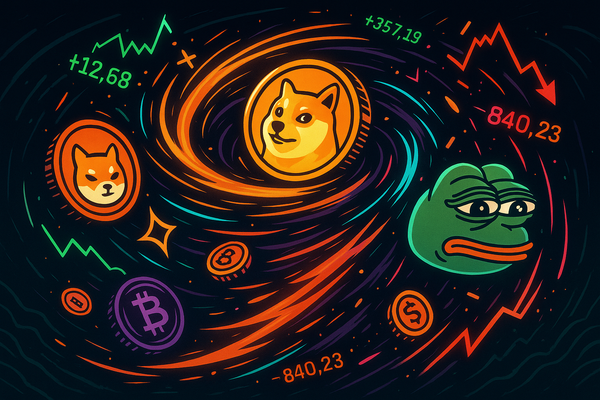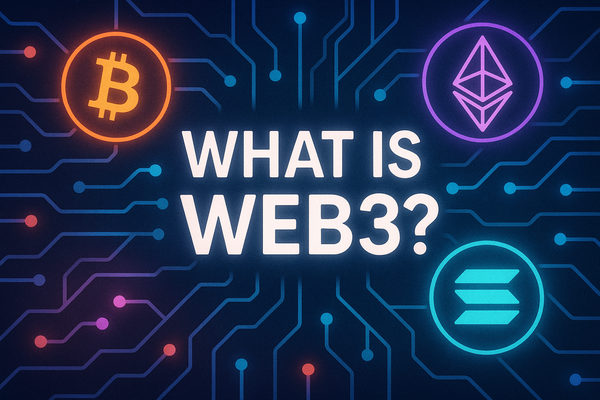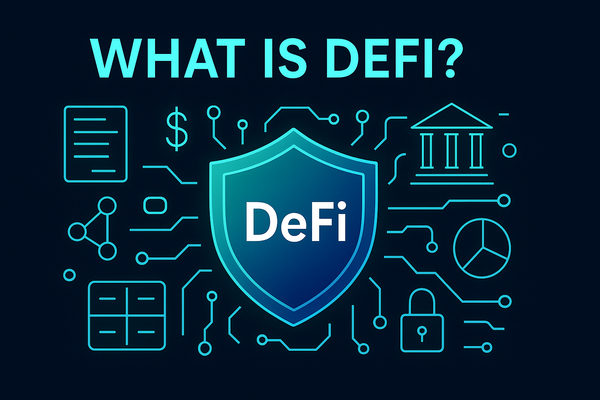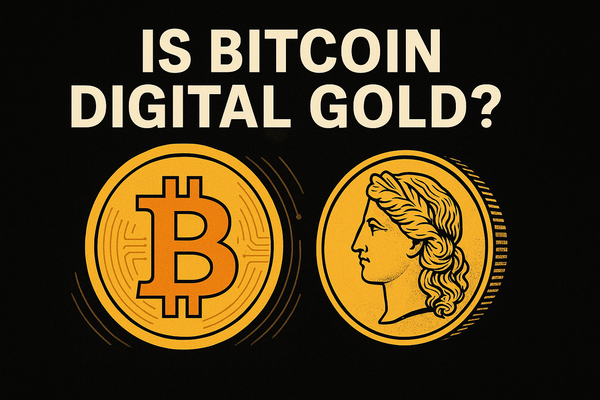What is Pepe Coin? The Meme That Took Crypto by Storm
Pepe Coin is one of the fastest-growing meme tokens in crypto history. Here's how it works — and why degens can’t stop talking about it.
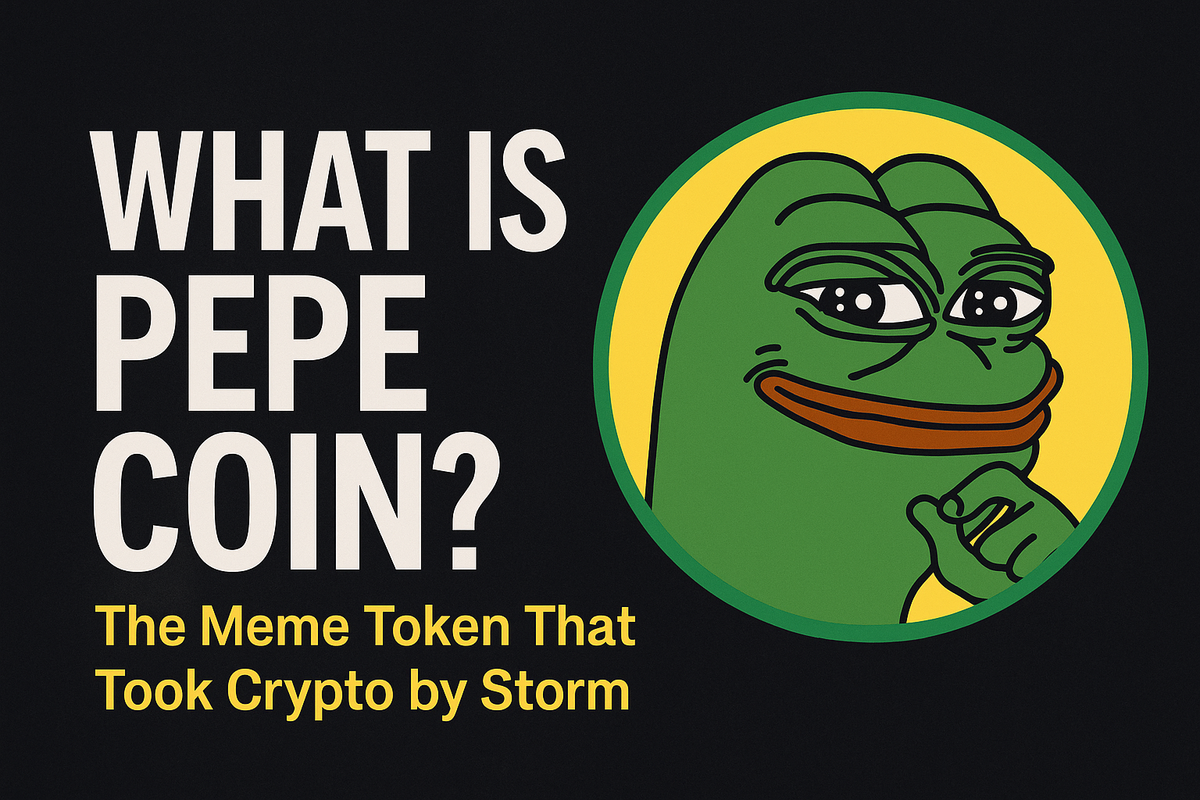
In the chaotic, meme-fueled world of cryptocurrency, few coins have made as loud an entrance as Pepe Coin. Launched in April 2023, this Ethereum-based meme token took the crypto community by storm, fueled by a mix of nostalgia, internet culture, and degenerate hype. Named after the infamous Pepe the Frog meme — a character that has evolved from harmless cartoon to controversial cultural symbol — the coin quickly climbed charts and captured the attention of both retail traders and crypto influencers.
But what exactly is Pepe Coin? Is it just another flash-in-the-pan meme token, or is there something more brewing beneath the surface of its green-skinned mascot? In this article, we dive into the origins of Pepe, the rise of the coin, its technical framework, and the community that helped it moon.
Origins of Pepe the Frog (150–200 words)
Pepe the Frog was created by cartoonist Matt Furie in 2005 as part of his comic series Boy’s Club. Originally a laid-back and goofy character known for saying “feels good man,” Pepe quickly found his way onto internet forums like MySpace and 4chan. His simple expression and flexible mood made him a favorite among meme creators, and soon he became one of the most recognizable memes on the internet.
By the early 2010s, Pepe had evolved into countless variations — from "Sad Pepe" to "Angry Pepe" — and was shared across platforms like Reddit, Tumblr, and Twitter. Unfortunately, his image was later co-opted by extremist groups and used in controversial political content, prompting widespread media coverage and backlash. In response, Furie launched a campaign to “reclaim Pepe,” reinforcing its original message of peace and absurd humor.
Despite the controversies, Pepe remains a deeply embedded part of internet culture. His widespread recognizability laid the perfect foundation for a meme coin — a crypto token that thrives on virality, community participation, and the chaotic energy of web culture.
Emergence of Pepe Coin
Pepe Coin (PEPE) was launched in April 2023 as an ERC-20 token on the Ethereum blockchain. With no presale, no team allocation, and a self-proclaimed “no utility” tagline, it embraced the pure spirit of a meme coin — a token driven by community energy and internet culture rather than fundamental value. Its creators remain anonymous, adding to the mystique and chaos that often fuels meme coin mania.
The launch was stealthy but explosive. Within weeks, PEPE surged in price and trading volume, catching the attention of both seasoned crypto traders and meme-loving speculators. The coin rocketed into the spotlight on social media platforms like Twitter (Crypto Twitter in particular), with hashtags like #PEPE trending and influencers fueling the frenzy.
Its rise was no small feat. In just a few months, PEPE reached a multi-billion dollar market cap, entering the top 100 cryptocurrencies by valuation. Major centralized exchanges like Binance and OKX listed the token, further legitimizing its presence in the broader market.
PEPE’s appeal lay in its raw memetic power and nostalgia. It didn’t pretend to solve real-world problems — it simply promised degens a wild ride, and they showed up in droves. In doing so, PEPE solidified its place as one of the most culturally charged and rapidly growing meme coins of the post-Dogecoin era.
Technical Aspects
While meme coins are often dismissed as “just for fun,” Pepe Coin’s technical structure is relatively straightforward and designed to maximize virality and scarcity. It is built on Ethereum as an ERC-20 token, which allows for easy integration with most wallets, DeFi protocols, and centralized exchanges.
The total supply of PEPE is a staggering 420.69 trillion tokens — a deliberate nod to internet humor and stoner culture. However, the team introduced deflationary mechanics to counterbalance this vast number. A portion of transaction fees is burned over time, meaning that the total circulating supply slowly decreases. This burn mechanism is intended to create artificial scarcity and drive long-term value through supply reduction.
Another key feature is the no-tax model: Pepe Coin does not impose taxes on buys or sells. This encourages high-volume trading activity and aligns with the degenerate, no-rules ethos of meme coin traders. There's also no roadmap or utility promised, which, ironically, adds to its credibility as a pure meme asset.
The project’s contract was renounced, meaning the creators relinquished control over it. This move was designed to demonstrate fairness and decentralization — once the coin was launched, it was fully handed over to the community. While this makes it immune to rug-pull concerns by the original devs, it also limits the possibility of future upgrades or protocol-level innovation.
Community and Market Reception
Pepe Coin’s meteoric rise wasn’t driven by marketing budgets or institutional partnerships — it was powered by community hype and the viral nature of meme culture. The token quickly developed a cult following on platforms like Twitter, Telegram, and Reddit, where memes, price predictions, and “PEPE to $1” dreams ran wild.
Crypto influencers, meme accounts, and even mainstream traders jumped aboard, amplifying the frenzy. The community began producing everything from fan art and music videos to custom Pepe-themed trading dashboards. This bottom-up momentum is what gave PEPE staying power — not a promise of utility, but a feeling of being “early” to the next big degen wave.
From a market perspective, the response was astonishing. PEPE became one of the fastest meme coins in history to hit $1 billion in market cap, with daily trading volumes often exceeding hundreds of millions of dollars. Its listings on major exchanges like Binance, OKX, and Crypto.com further legitimized it and sparked new waves of FOMO.
In essence, the market didn’t just buy PEPE — it embraced it. The coin became a symbol of internet culture’s ability to disrupt traditional financial narratives, all through the lens of ironic humor and decentralized hype.
Controversies and Challenges
Despite its playful branding and viral success, Pepe Coin isn’t without controversy — much of it stemming from the character it’s based on. Pepe the Frog, once a symbol of wholesome internet humor, became embroiled in political controversy during the mid-2010s. Co-opted by extremist groups and used in hate-related content, Pepe was eventually labeled a hate symbol by the Anti-Defamation League (ADL), despite creator Matt Furie’s public disavowal and efforts to reclaim the character’s image.
This baggage continues to haunt any project associated with Pepe, including the coin. While the Pepe Coin team made no political associations, some critics argue that any use of the meme risks reviving its darker associations. This makes mainstream acceptance more difficult, especially for users or institutions wary of reputational risk.
From a crypto-native perspective, another major challenge is sustainability. Like many meme coins, PEPE lacks utility, a formal roadmap, or active development. Without ongoing innovation or real-world use cases, the token risks becoming a relic of a single hype cycle.
That said, its community-first ethos and self-aware absurdity have allowed it to thrive where others faltered. But the same characteristics that fuel its popularity also pose long-term risks if the meme runs out of steam.
Future Outlook
The future of Pepe Coin hinges almost entirely on its community and the continued momentum of meme culture. Without a development team or utility-driven roadmap, PEPE's staying power depends on social engagement, viral trends, and speculative trading cycles.
That said, the project has carved out a unique niche: one that doesn’t pretend to offer utility but thrives on decentralized chaos. As long as meme-driven investing continues to resonate with traders — especially younger, internet-native investors — PEPE could remain relevant as a symbol of crypto’s rebellious, absurdist undercurrent.
There’s also the potential for community-led development, such as NFT integrations, staking wrappers, or Pepe-themed dApps, though none are officially planned. If such efforts emerge organically, they could offer new life to the coin without betraying its anti-roadmap ethos.
Ultimately, PEPE’s future is as unpredictable as the internet itself — which, ironically, may be its biggest asset.
What is Pepe Coin? FAQ
Pepe Coin is a meme-based ERC-20 token launched in April 2023, inspired by the internet-famous Pepe the Frog character.
No, Pepe Coin is not endorsed by Matt Furie, the original creator of Pepe the Frog.
No, Pepe Coin does not offer utility or a development roadmap. It is driven purely by meme culture and community hype.
Pepe Coin includes a burn mechanism that reduces token supply over time, adding scarcity to its large initial issuance.
Pepe Coin is available on major crypto exchanges like Binance, OKX, and decentralized platforms such as Uniswap.


